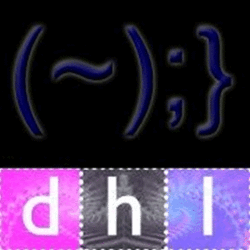Mind maps are visual representations of information, concepts, or ideas. They typically start with a central idea or theme and branch out into subtopics or related concepts. Mind mapping https://hislide.io/mind-map/ is a powerful technique for organizing thoughts, enhancing creativity, and improving memory.
A Brief History of Mind Mapping
In the 1970s, Tony Buzan popularized mind mapping, a non-linear thinking and visual organization technique. Mind maps start with a central idea, branching out to subtopics with keywords, images, and colors. Buzan's innovation tapped into our brain's non-linear thinking, making information more memorable and encouraging creativity. Mind maps revolutionized note-taking, problem-solving, and information organization, becoming widely used in education and business. Today, they continue to enhance creativity and productivity thanks to Tony Buzan's visionary contributions.

Benefits of Mind Mapping
Enhancing Creativity
- Free-Flowing Thinking: Mind maps provide a platform for unrestricted thinking. Unlike linear methods, mind maps encourage ideas to flow freely and without constraints.
- Effective Brainstorming: They are excellent tools for brainstorming sessions. The non-linear structure allows participants to contribute ideas simultaneously, fostering a dynamic and creative environment.
- Visual Connections: Mind maps offer a visual representation of ideas. This visual nature helps individuals see connections and relationships between concepts that might be obscured in traditional linear thinking.
Improving Memory and Learning
- Dual-Brain Engagement: Engaging both the left (logical) and right (creative) sides of the brain is a hallmark of mind mapping. This dual-brain activity enhances memory and comprehension.
- Multi-Sensory Experience: The inclusion of keywords, images, and colors within mind maps creates a multi-sensory learning experience. These visual and textual cues reinforce memory and understanding.
- Efficient Study: When studying with mind maps, you are presented with a concise and organized representation of the subject matter. This streamlines the learning process, making it more efficient and enjoyable.
Streamlining Problem Solving
- Structured Approach: Mind maps provide a structured approach to problem-solving. They help break down complex issues into manageable components, making the problem more approachable.
- Root Cause Analysis: By exploring various subtopics and their interconnections within a mind map, you can identify the root causes of a problem more effectively.
- Effective Solutions: The visual representation of the problem and its components facilitates a clearer understanding of the issue. This clarity empowers you to develop effective solutions and strategies.
In summary, mind mapping offers a set of valuable benefits:
- It encourages unrestricted thinking and brainstorming.
- It engages both logical and creative aspects of the brain.
- It provides a visual, multi-sensory learning experience.
- It streamlines problem-solving through structured analysis and solution development.
These advantages make mind mapping a versatile and powerful tool for various aspects of life, from creative thinking and learning to tackling complex challenges.
Getting Started with Mind Mapping
Tools and Materials: To embark on the journey of mind mapping, you won't need much. All you require are some basic supplies: paper, pens, and most importantly, an open mind. However, in this digital age, it's worth noting that digital mind mapping tools have gained popularity due to their flexibility and user-friendly features.
Creating Your First Mind Map:
The process of creating your first mind map is a creative and liberating experience. Here's how you can do it:
- Central Idea: Begin by selecting a central idea or topic that you want to explore. This central concept should be placed right at the center of your page, figuratively and literally.
- Branching Out: From this central idea, draw branches that radiate outward in various directions. Each of these branches represents a subtopic or related idea associated with the central theme.
- Keywords, Images, and Colors: To make your mind map not just informative but visually engaging, employ keywords, images, and colors. Keywords should be concise and descriptive, while images and colors serve as visual aids. This dynamic approach enhances comprehension and memory retention.
Mind Mapping Techniques:
- The Central Idea: The central idea is the heart of your mind map. It acts as the focal point, encapsulating the main theme or topic you intend to explore. It should be clear and concise, serving as the guiding light for the entire map.
- Branching Out: Branches are the lifeblood of your mind map. They represent the primary categories or subtopics related to your central idea. Each branch has the potential to further split into smaller branches, creating a hierarchical structure that can accommodate a wealth of information.
- Colors and Visualization: Colors are not just for aesthetics; they serve a crucial purpose in mind mapping. By using colors strategically, you can differentiate between branches and make your mind map visually appealing. Visual elements, such as icons and images, can be strategically placed to enhance understanding and boost memory retention.
Incorporating these techniques into your mind mapping process can unlock its full potential, enabling you to create visually engaging and highly effective representations of complex ideas and concepts.
In conclusion, mind mapping is a versatile and powerful tool that empowers individuals to unleash their creativity, enhance memory and learning, and streamline problem-solving. Whether using traditional pen and paper or digital tools, the structured yet visually dynamic nature of mind maps offers a unique approach to organizing thoughts and ideas. By embracing this technique, individuals can harness its full potential to boost productivity, foster innovation, and navigate the complexities of modern life more effectively.

